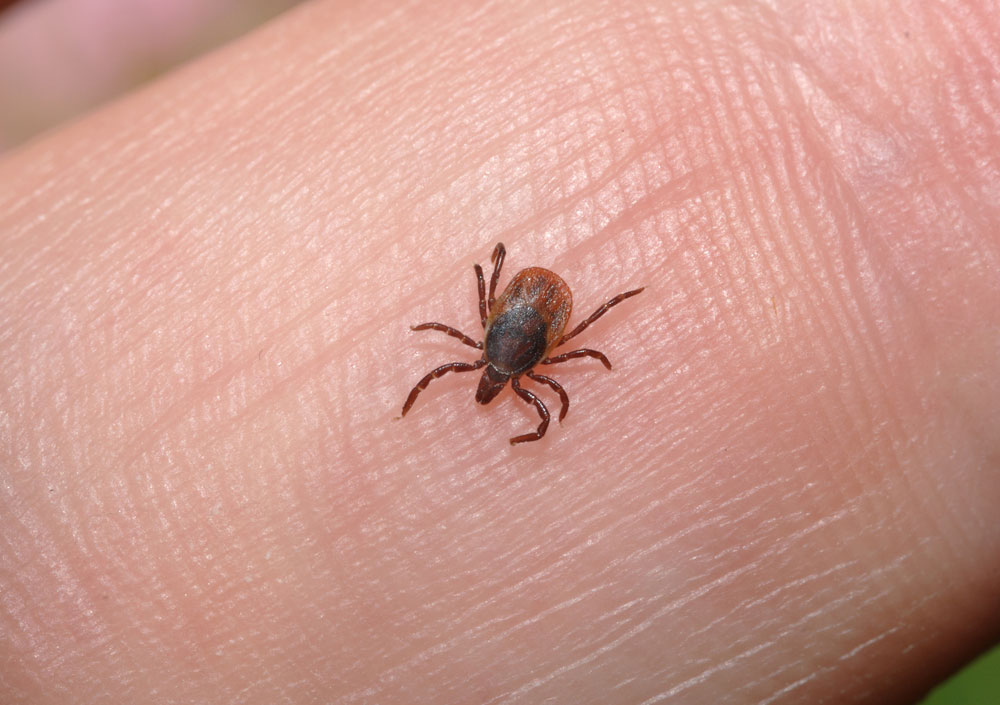How a Tick Bite Can Lead to Limb Amputations

A woman in Oklahoma who contracted Rocky Mountain spotted fever from a tick bite recently needed to have all four of her limbs amputated as a result of her infection. But exactly how does this disease cause such a severe complication?
The woman, 40-year-old Jo Rogers, may have been bitten by a tick while on vacation in Grand Lake, Oklahoma, in early July. Four days after her trip, she experienced flulike symptoms, and was hospitalized a day later, according to CNN.
Doctors tested her for West Nile virus, meningitis and other infections before finally diagnosing her with Rocky Mountain spotted fever, which is caused by the bacteria Rickettsia rickettsia and transmitted by ticks. Rogers' limbs turned black and blue, and doctors amputated her arms and legs below the knees and elbows, CNN said.
Although it happens rarely, amputation can be necessary in cases of Rocky Mountain spotted fever if a patient is not treated early enough, said Dr. Amesh Adalja, an infectious-disease specialist and a senior associate at the University of Pittsburgh Medical Center's Center for Health Security. The antibiotic used to treat the infection works best if it's started before the fifth day of a person's illness, according to the Centers for Disuse Control and Prevention.
Rogers appears to have suffered a more severe course of the disease than typical, because she "received treatment outside of that window," Adalja said. People who are treated early may recover quickly and not need to be hospitalized, the CDC says. However, if left untreated, the disease has a fatality rate of nearly 75 percent, according to the Mayo Clinic. [10 Important Ways to Avoid Summer Tick Bites]
In cases like Rogers', the bacteria infect cells that line a person's blood vessels, damaging the vessels and causing a loss of fluid, which leads to a drop in blood pressure, Adalja said. A person's immune system response to the bacteria can also causes other damage in the body, he said.
When any infection leads to a dramatic drop in blood pressure, a person goes into septic shock, which means that their blood pressure is too low to support life, Adalja said. As a result, the body starts to shunt blood to vital organs, which reduces blood flow to the extremities, and so tissue starts to die, he said. This tissue death can lead doctors to amputate limbs.
Sign up for the Live Science daily newsletter now
Get the world’s most fascinating discoveries delivered straight to your inbox.
Most people with Rocky Mountain spotted fever develop a rash during their illness, but in some cases, the rash can occur late in the disease, and about 10 percent don't have a rash at all, the CDC says.
When patients with the illness don't have a rash, or their rash is not typical for the disease, delays in diagnosis can happen, Adalja said.
Follow Rachael Rettner @RachaelRettner. Follow Live Science @livescience, Facebook & Google+. Original article on Live Science.

Rachael is a Live Science contributor, and was a former channel editor and senior writer for Live Science between 2010 and 2022. She has a master's degree in journalism from New York University's Science, Health and Environmental Reporting Program. She also holds a B.S. in molecular biology and an M.S. in biology from the University of California, San Diego. Her work has appeared in Scienceline, The Washington Post and Scientific American.









